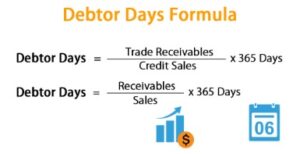
Workflow systems work best when they include separate workflows for each type of project and a unified system that allows you to see an overview of your team’s workload. Though spreadsheets can work for a bit, there are more robust systems such as Jetpack Workflow that are made for accountants and bookkeepers. Take a look at my recommendation for the 5 best books for accounting firms looking to modernize and stay ahead of the curve. Your qualification process helps your firm see how likely it is a certain prospect will become a client. It also provides insight into how your services stack up against buyer intent.
Remote Work and Workflow Management
Your organization has a variety of critical tasks that need to be completed on an ongoing basis. Put great communication on the front burner—decide who best represents your firm and only have those staff members communicate externally. By standardising your administrative and operational tasks, you will embed better organisation within your practice from the ground up. All this leads to better consistency when it comes to delivering a quality, compliant experience to your clients. If you or your team members struggle to find information quickly, you may be able to create a single repository for that information that is readily available at the click of a mouse.
Key elements of an effective accounting workflow
This aids in training and ensures that less experienced team members can still statement of comprehensive income produce work that meets your firm’s standards. Templates also make it easier to delegate tasks confidently, knowing the output will consistently meet requirements. This saves your firm time by reducing manual effort, which allows staff to focus more on higher-level tasks. Wouldn’t it be great if upgrading your workflow was as easy as buying a new laptop? But processes and workflows are different for every firm and every individual practice, depending on your niche and your service options. The intuitive system includes various views that let you monitor your projects via a calendar or to-do list.
New client onboarding
Understand the workflows you need for your accounting or bookkeeping practice, and how to create them. Accounting firms handle sensitive client information, such as tax and financial data, payment details, and employee records. While these are easy to create initially, they’re not scalable and can become convoluted and confusing as you grow your client base, bring in new employees, and expand your services.
- But to automate, you need standardized processes—you can’t automate a non-standardized task.
- Cloud migration, a redefined toolkit and increased integration—the good, the bad, the ugly, and the future.
- How you onboard new clients sets the tone for the rest of your professional relationship.
- Fortunately, technology provides accountants with amazing tools, such as workflow management software.
- Yup, the way you invoice and the way you collect money is certainly an important workflow that needs to be considered.
- When you can see and manage all the tasks it takes to complete a process, you eliminate bottlenecks and produce excellent results for each project.
You can save a lot of time in this process if your workflow is standardized and automated — especially when you’re onboarding a lot of new clients all at the same time. This is a must-have for many accounting firms, but it may not offer all of the workflow features profit and loss questions you need to maximize efficiency. Not only do accounting templates save you the time and effort it takes to do everything from scratch each time, but they also provide consistency and standardization across all documents or reports. This facilitates efficiency by allowing staff to populate documents quickly without focusing on layout or design. Some software even offers insights into your team’s efficiency and productivity, helping you to refine your workflows to maximize these key benefits.
A potential area of improvement would be to set clients up with a digital document collection solution like Dropbox or Hubdoc. Then you and your clients can send and receive documents from anywhere you have an internet connection. But if you have an office and clients mail documents to you, someone has to be in the office to open the mail and scan it or route it to the right person.
Finding new ways to enhance knowledge and skills helps accountants adapt to an ever-changing landscape and create a current accounting workflow accordingly. In task management workflows every member of your team works from the same playbook, increasing visibility and helping maintain clear communication between team members. Of course, there are different workflows within an accounting firm that seek to achieve different goals.

Instead, an automated workflow solution acts as the practice’s single data source. Team members can retrieve specific files within challenges of replacement cost method for tech assets seconds and share documents with co-workers and clients as needed. Develop standardised accounting processes to handle recurring workflows for accountants.
Today’s most progressive accounting firms have transformed how they work, streamlining processes and maximizing output, without sacrificing their staff. This leads to more profitable team members who can grow in their positions without additional resources. With an accounting workflow automation solution, work can be assigned and monitored in real-time, providing greater transparency for employees and their managers. It also improves accountability, with job progress being monitored immediately and the ability for team leaders to identify high-quality performers. Encouraging regular meetings with your team and client check-ins can address any burning questions around accounting workflows, provide updates, and clarify expectations.
